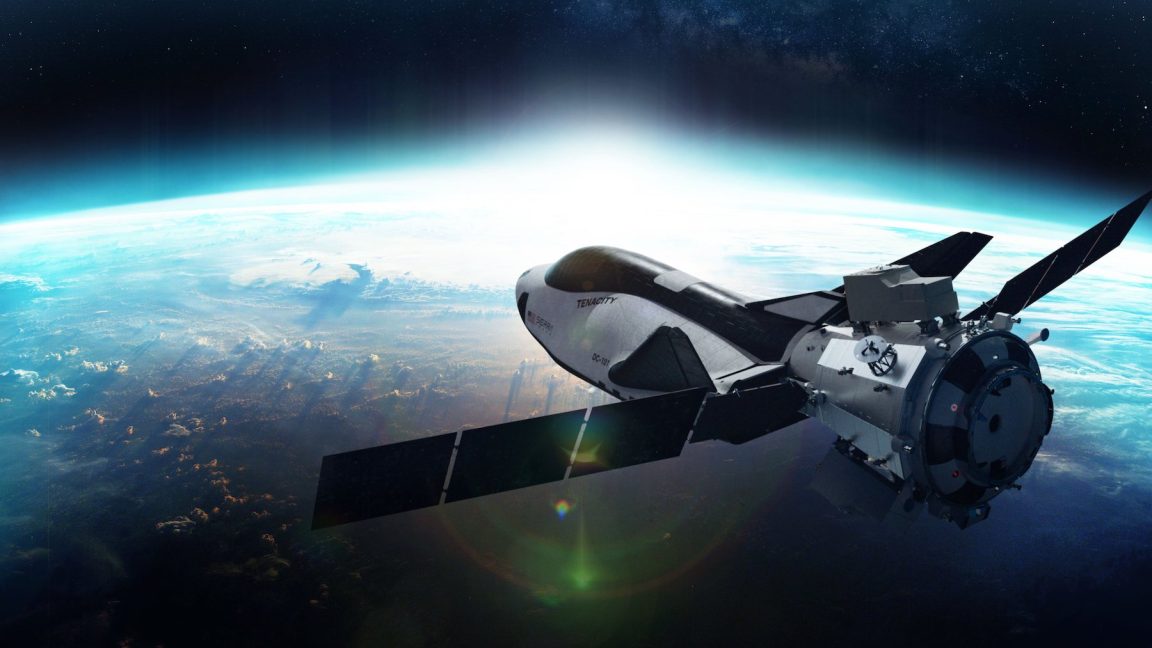Sierra’s Dream Chaser Spaceplane Faces New Setbacks and Uncertainty
The development of Sierra Nevada Corporation’s Dream Chaser spaceplane has been a long and arduous journey, with the project now facing significant delays and uncertainties. Despite its initial promise as a versatile and cost-effective transportation system for cargo to the International Space Station (ISS), Dream Chaser seems to be further than ever from taking flight.
NASA’s Decision and Its Implications
On Thursday, NASA announced that the first flight of the winged spacecraft would no longer berth with the ISS. Instead, the space agency has decided that a free flight demonstration is in order. This decision was made after an earlier report by Ars Technica revealed the difficulties facing Dream Chaser’s development.
According to Dana Weigel, manager of NASA’s International Space Station Program, "Development of new space transportation systems is difficult and can take longer than what’s originally planned." Weigel emphasized that this mutually agreed-upon decision enables testing and verification to continue on Dream Chaser, as well as demonstrating the capabilities of the spaceplane for future resupply missions in low Earth orbit.
A Dream Delayed
The development work on Dream Chaser began back in 2004 when a US company named SpaceDev resurrected a NASA concept known as the HL-20 spaceplane. Sierra Nevada Corporation acquired SpaceDev in 2008 and went on to win $362 million in NASA contracts to work on crewed transportation to the ISS.
Despite its initial promise, Sierra Nevada ultimately lost out on the Commercial Crew competition to Boeing and SpaceX. However, in 2016, a cargo version of Dream Chaser was incorporated into a NASA program to deliver cargo to the ISS. As part of its contract, Sierra Space was awarded a minimum of seven flights to the space station.
The Total Value of Contracts
The total value of contracts for dozens of supply missions, split among SpaceX, Northrop Grumman, and Sierra, was $14 billion. A NASA spokesperson declined to reveal how much money has been allocated to Sierra for its work on a cargo version of Dream Chaser.
However, in its news release, NASA said it is no longer obligated to a specific number of resupply missions. This change in policy could have significant implications for the development and operation of Dream Chaser.
Chasing Those Defense Dollars
In response to the announcement, Sierra Space released a statement highlighting the new approach’s flexibility as the company seeks to attract national defense contracts. According to Fatih Ozmen, executive chair at Sierra Space, "Dream Chaser represents the future of versatile space transportation and mission flexibility."
This transition provides unique capabilities to meet the needs of diverse mission profiles, including emerging and existential threats and national security priorities that align with our acceleration into the Defense Tech market.
Uncertainty Surrounds Certification
Although the NASA news release does not detail the space agency’s concerns about allowing Dream Chaser to approach the station, sources have told Ars that NASA has yet to certify the spacecraft’s propulsion system. The spacecraft is powered by more than two dozen small rocket engines, each capable of operating at three discrete levels of thrust for fine control or more significant orbit adjustments.
Certification is a necessary precursor for allowing a vehicle to approach the orbiting laboratory. This lack of certification raises questions about Dream Chaser’s ability to meet its intended goals and timelines.
A New Target Date
Sierra said it is now targeting a "late 2026" debut for Dream Chaser, but this date is far enough in the future that it is likely subject to Berger’s Law, which states that delays will always increase over time. As such, it is probable that no earlier than 2027 can be expected.
This new target date all but precludes a cargo mission to the ISS, which is scheduled to be deorbited in 2030. Moreover, with two capable supply vehicles already operational – SpaceX’s Dragon and Northrop’s Cygnus – Dream Chaser faces significant hurdles in establishing itself as a viable option for commercial space stations in low-Earth orbit.
Conclusion
The development of Sierra Nevada Corporation’s Dream Chaser spaceplane has been marked by delays, uncertainties, and setbacks. Despite its initial promise, the project now seems to be further than ever from taking flight. With NASA no longer obligated to a specific number of resupply missions and the lack of certification for the spacecraft’s propulsion system, it remains to be seen whether Dream Chaser can overcome these obstacles and achieve its intended goals.

